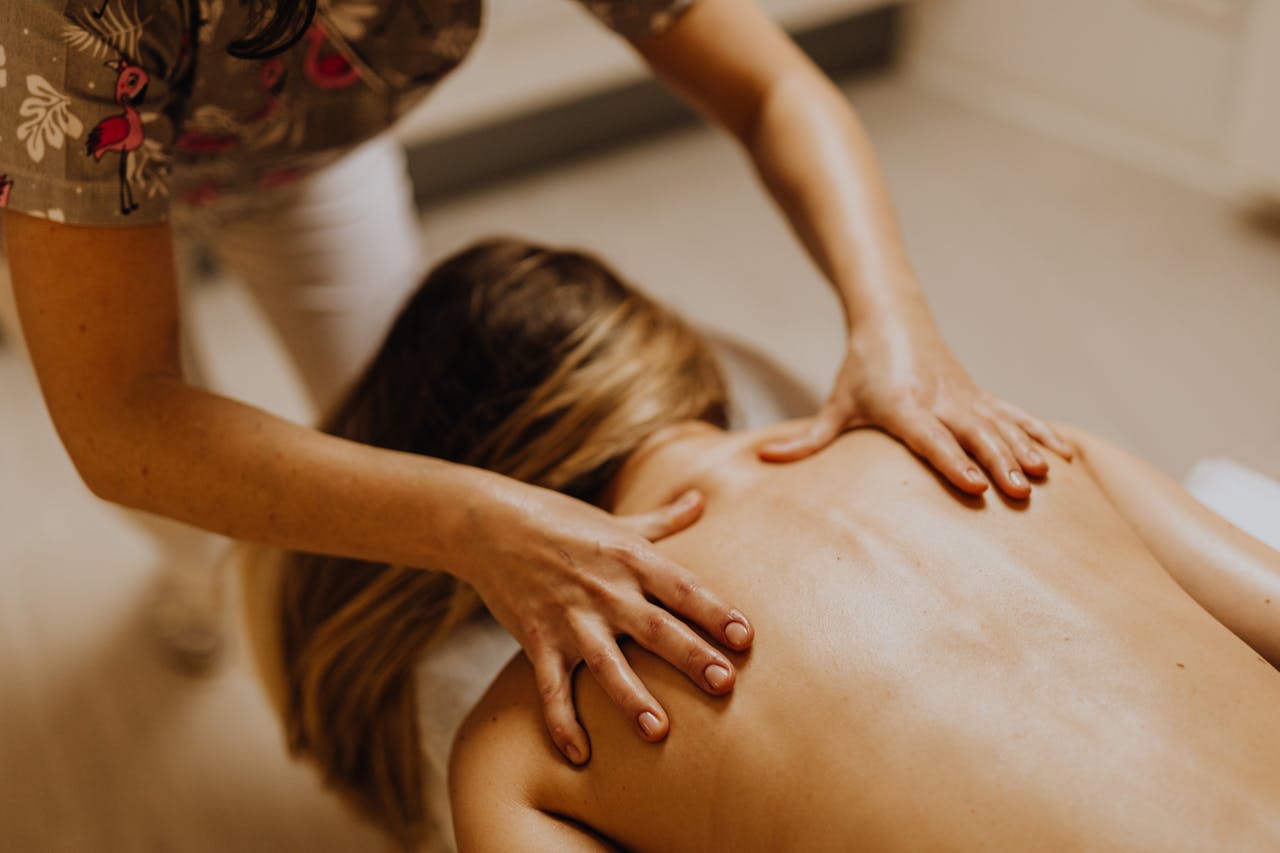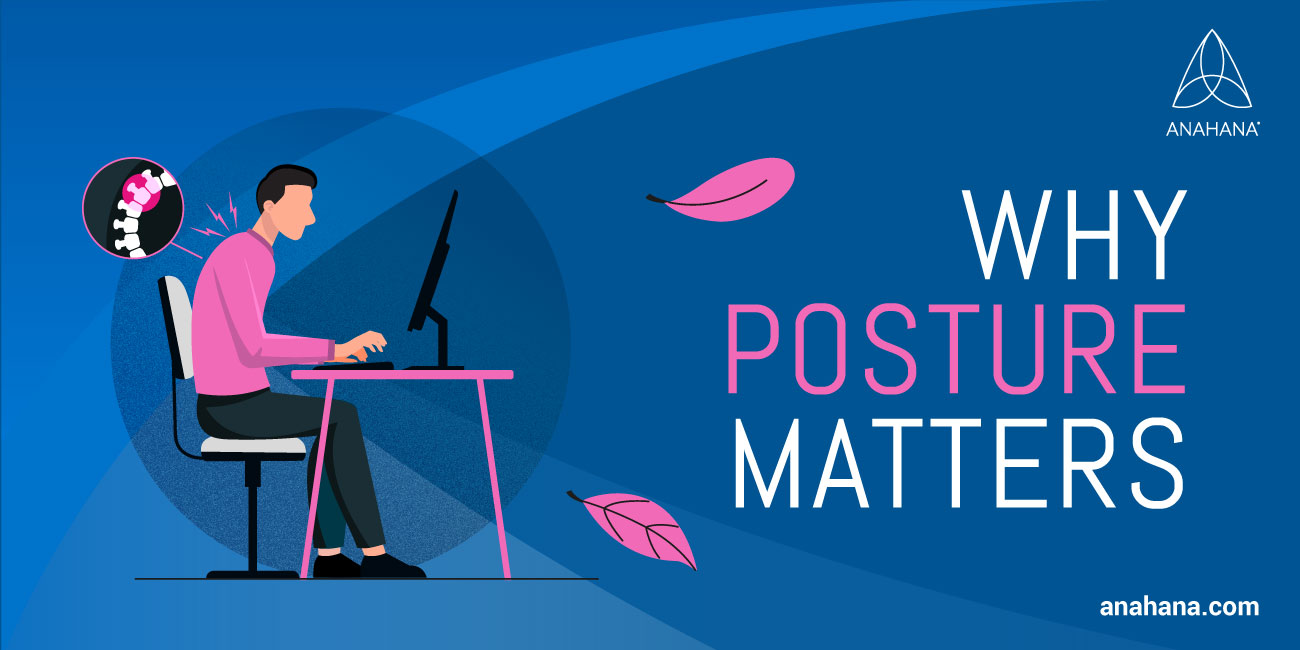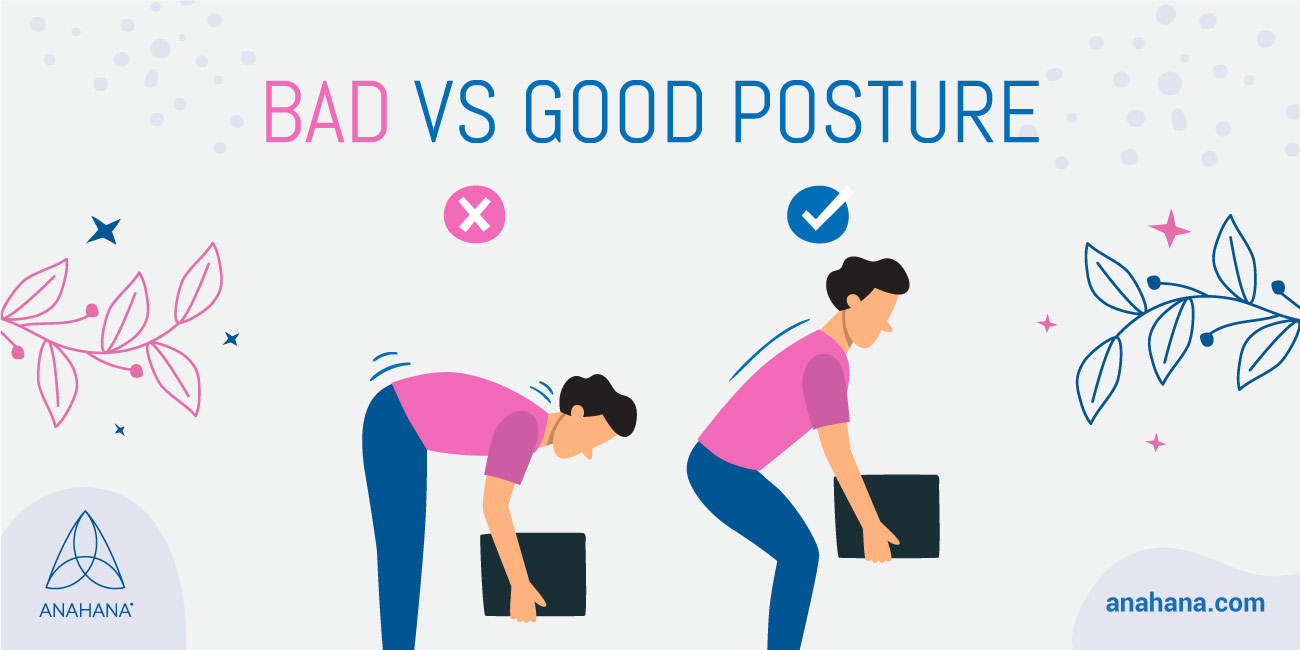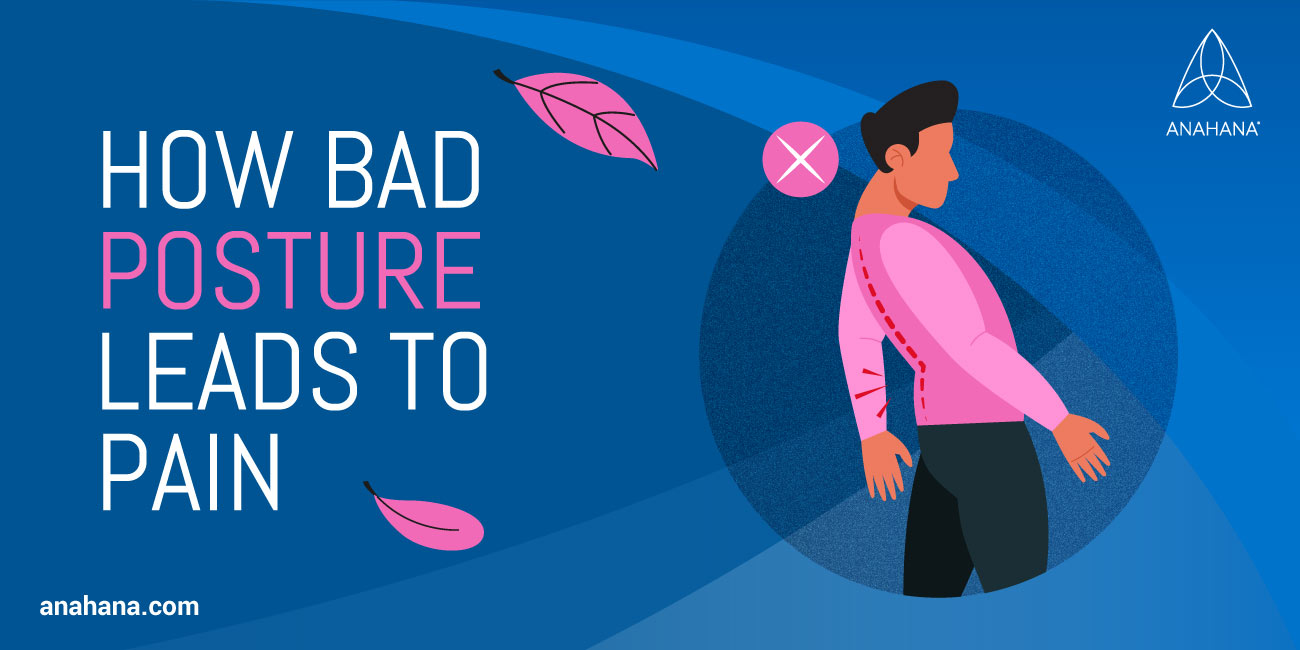5
Posture
Last Updated: November 5, 2024

Table of Contents
Posture describes how a person holds their body in standing, sitting, and through movement. Proper posture is essential, as poor posture significantly contributes to many musculoskeletal conditions. Many factors influence posture, including lifestyle, muscle tone, daily activities, and genetic factors.
Key Takeaways
- Importance: Good posture aligns the spine and lumbar spine properly, helping to prevent back and neck pain.
- Benefits: Improves breathing, circulation, and confidence, while reducing muscle strain and fatigue, especially in the core and stomach muscles.
- Poor Posture Effects: Can lead to chronic pain, including neck pain, headaches, and decreased energy levels.
- Ergonomics: Adjusting your workspace and daily habits to maintain balance helps support proper body position.
- Exercises: Strengthening core muscles and improving lumbar spine support enhances posture.
- Mindfulness: Regularly checking and correcting your body position throughout the day is crucial.
What is Posture?
Posture is the way that someone holds their body. It is important to prevent pain, maintain healthy muscle tone, and improve long-term health, especially during aging. Like all aspects of fitness, people can train for better posture and form healthy postural habits to benefit everyday life.
Static Posture
Static posture is observable when the body is not in motion, like sitting, standing, or sleeping. Even when stationary, some muscles are active to maintain that position. The shoulder, back, neck, and abdominal muscles support the body's sitting, standing, or lying positions. Being stationary for long periods can be hard on the body, especially with poor static posture.
Dynamic Posture
Dynamic posture refers to the way one holds their body while moving. This concept encompasses walking, running, jumping, squatting, and bending, like lifting heavy objects, performing any exercise, or playing with children. Achieving and maintaining good dynamic posture requires body awareness and muscle strength and is important to avoid injury.
Why Does Posture Matter?
 Correct posture is vital to maintaining good health and preventing injury. In fact, OHSA - the United States Occupational Safety and Health Administration - identifies poor posture as a significant contributor to musculoskeletal disorders. Everyday activities like driving, washing dishes, typing, or performing repetitive tasks can cause serious health problems if performed with poor posture.
Correct posture is vital to maintaining good health and preventing injury. In fact, OHSA - the United States Occupational Safety and Health Administration - identifies poor posture as a significant contributor to musculoskeletal disorders. Everyday activities like driving, washing dishes, typing, or performing repetitive tasks can cause serious health problems if performed with poor posture.
What Makes Good Posture?
"Good posture" varies from person to person, but some elements apply to everyone. Good posture requires balance to stay in a position that does not cause abnormal stress on the musculoskeletal system. Imbalances will place more stress on the spine, leading to back pain and injury.
Components of Poor Posture
Slouching or slumping with rounded shoulders, an exaggerated curve or rounding of the back, and being bent forward at the waist are all common postural conditions that can have detrimental effects over time. These issues can often result from poor flexibility, an untreated injury, neglect, or significant muscle imbalances.
What Influences Posture?
 Posture is complex. Doumas, Morsanyi, and Young (2018) state that posture is "an adaptive process that relies on sensory, motor, and cognitive processes." This study shows that thoughts, perceptions of the external environment, and muscle memory are all significant contributors to how someone holds their body. Genetic factors, muscle tone or tension, lifestyle, and activity level also contribute to posture. Thankfully, one can directly modify most of these factors with little conscious effort.
Posture is complex. Doumas, Morsanyi, and Young (2018) state that posture is "an adaptive process that relies on sensory, motor, and cognitive processes." This study shows that thoughts, perceptions of the external environment, and muscle memory are all significant contributors to how someone holds their body. Genetic factors, muscle tone or tension, lifestyle, and activity level also contribute to posture. Thankfully, one can directly modify most of these factors with little conscious effort.
Muscle Tension
Residual muscle tension, or tone, contributes to full-body posture. For instance, tight lower back muscles and hamstrings will tilt the pelvis if the abdominal muscles are not strong enough to maintain their position. Stretching, massage, tai chi, and yoga can relieve muscle tension and help improve posture. During the work day, one can release tension by taking brief walks, changing sitting positions, and taking frequent breaks.
Stress
Stress can contribute to poor posture. Lundberg et al. (1999) studied supermarket cashiers' neck and shoulder muscle tension and related it to stress levels while working. The study found elevated stress levels linked to more shoulder and upper back tension, tying back to the causes of poor posture.
Lifestyle Factors
From pilates instructors to powerlifters, plumbers to programmers, and everyone in between, what a person does with their body will impact their posture. Body composition and activity level are also important, and regular exercise, stretching, and maintaining a healthy weight make maintaining the correct posture more easily attainable.
Muscular Imbalances
If some muscles are too tight or opposing muscles are too weak, this imbalance can cause shifts in posture. If the upper back muscles are not strong enough to counteract tight, shortening chest muscles, rounded shoulders, and a jutting chin can exaggerate the curve of the upper spine. A rounded upper back can have compounding effects all down the back, into the pelvis, and down the legs.
Ludwig, Kelm, and Hopp (2020) studied the impact of quadriceps-hamstrings imbalances on posture, specifically the angle of the pelvis. Their study found a relationship between strength imbalances of the front and back muscles of the legs and poor pelvic posture, resulting in pain.
Posture and Pain
 Chronic poor posture can cause new injuries or exaggerate existing ones. It can lead to semi-permanent changes in muscle length and flexibility. It can reduce a person's ability to catch themselves from a slip or fall, greatly increasing the likelihood of serious injury. Beyond that, headaches, muscle tweaks or strains, and stiffness can all be due to the added stress of living with poor posture.
Chronic poor posture can cause new injuries or exaggerate existing ones. It can lead to semi-permanent changes in muscle length and flexibility. It can reduce a person's ability to catch themselves from a slip or fall, greatly increasing the likelihood of serious injury. Beyond that, headaches, muscle tweaks or strains, and stiffness can all be due to the added stress of living with poor posture.
Improving and Maintaining Good Posture
Knowing what good posture should feel like for the body is important to maintain good posture. Some body awareness is needed to achieve this, but that awareness is easily trained. The first step is to re-wire the body's perception of how standing, sitting, or walking should feel. It can be frustrating to stand or walk differently, but before long, the process will become automatic. Observing yourself in a mirror and working through the "Posture Checklist" at the bottom of this article can help improve your posture. This method gives visual feedback to ensure that posture looks how it should while providing internal, body-specific feedback to know how it should feel.
Standing
Avoid a body forward position - the hips should always stay directly under the shoulders, with the hip and shoulder joints stacked. Good standing posture involves maintaining the three natural curves of the spine, keeping the shoulders pulled back and down, with the chest up. Keep weight balanced evenly across both feet when standing, and wear comfortable, preferably low-heeled shoes. Keep the chin tucked slightly.
Sitting
A person's sitting posture is significantly influenced by where they sit. Switch sitting positions or adjust the environment to make the correct position more achievable - proper height chairs and work surfaces are a great start. To improve sitting posture, maintain a right angle at the torso and stay upright with the knees bent to about 90°.
Use a back support or rolled-up towel to maintain the spine’s natural curves. When driving, adjust the seat and steering wheel so the chest is up and the chin is tucked. Avoid sitting at a desk so low as to cause slouching or so high that the shoulders are shrugged.
Posture Checklist: Six Simple Steps
- Keep the chin slightly tucked with the ears in line with the shoulders.
- Keep the shoulders back and down.
- Chest up.
- Shoulders should stay directly over the hips when standing or sitting.
- Elbows close to the body, arms bent slightly.
- When standing, feet should be directly under the hips with the feet flat. When seated, maintain a right angle at the hips and the knees.
Frequently Asked Questions
How does good posture look and feel?
Good posture is relative but shouldn't "feel" like anything. Work through the Six Simple Steps above to check your own posture.
What are the downsides of bad posture?
Increased likelihood of injury from a slip/trip/fall, chronic muscle aches and pains, and headaches are some of the most common issues caused by poor posture.
Where can I learn more about posture?
The American Chiropractic Association, Occupational Safety, and Health Administration, local health administrations, and a trusted healthcare professional are the best resources for learning about posture.
References
Musculoskeletal problems in frequent computer and internet users
Cognitively and socially induced stress affects postural control - Experimental Brain Research
The dynamics of standing balance - Trends in Cognitive Sciences
Posture Effects on Students - American Chiropractic Association
A reliable technique for the assessment of posture - Journal of Sports Medicine and Physical Fitness
Ergonomics - Occupational Safety and Health Administration
Disclaimer
The contents of this article are provided for informational purposes only and are not intended to substitute for professional medical advice, diagnosis, or treatment. It is always recommended to consult with a qualified healthcare provider before making any health-related changes or if you have any questions or concerns about your health. Anahana is not liable for any errors, omissions, or consequences that may occur from using the information provided.

Dr. Darlene Buan-Basit is a highly experienced licensed Chiropractor and Pilates instructor with expertise in many techniques, including Medical Acupuncture, Traditional Chinese Medicine, and Advanced Massage Techniques.
